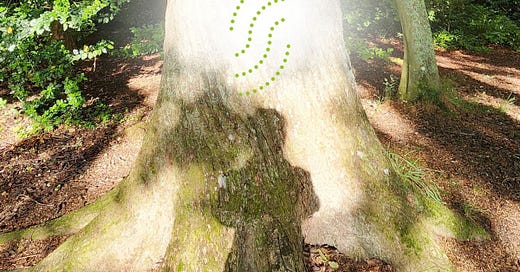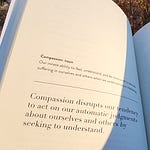Last week, I was between back-to-back meetings, feeling that familiar tightness in my chest—you know the one that whispers, "You're not doing enough, being enough, fast enough." Instead of pushing through, I took 30 seconds. Hand on heart. Three words: "I see me."
That's when I was reminded why I created this practice. We spend so much time seeking external validation, waiting for others to see us, that we forget the most important recognition comes from within. This very epiphany had led me to develop the "I See Me" micro-practice in my book Return to Mindfulness—one of 48 practices designed to help us build eight essential mindfulness skills throughout our day.
Why This Matters (The Science)
As a woman from a collectivist culture, I was raised to tune into others' needs with laser precision. I can sense when someone needs support before they even ask. But turn that caring inward? That's where I stumble.
Turns out, I'm not alone. When we surveyed 500 participants to assess their mindfulness skills, self-compassion scored the lowest at just 47%—nearly 30 points lower than compassion for others at 76%. Think about that: we're almost twice as good at caring for others as we are at caring for ourselves.
Here's what's fascinating: Despite scoring lowest in our survey, our published research revealed that self-compassion had the greatest impact on stress reduction—more powerful than awareness, focus, or even inner calm. It was also a significant contributor to life satisfaction.
But what exactly is self-compassion? Drawing from Dr. Kristin Neff's work, self-compassion entails being kind and understanding toward oneself in instances of pain or failure rather than being harshly self-critical; perceiving one's experiences as part of the larger human experience rather than seeing them as isolating; and holding painful thoughts and feelings in mindful awareness rather than over-identifying with them.
What's powerful about self-compassion is what it disrupts: our tendency to be overly self-critical of failures and inadequacies, which only creates more roadblocks to reaching our goals. Research shows that self-compassion is a more effective motivator than harsh self-criticism. People who practice self-compassion tend to have a learning and growth mindset and are more likely to take risks. They have less fear of failure and show greater confidence in their abilities to reach their goals.
Unlike self-esteem, which often depends on being better than others and can lead to narcissism, self-compassion offers authentic acceptance of one self along, including our strengths and learning edges. According to the science, self-compassion does in fact appear to offer the same advantages as high self-esteem, with no discernable downsides. When we practice self-compassion, we literally shift our nervous system from threat mode to safety mode, releasing oxytocin and reducing cortisol.
Studies in neuroscience reveal that self-compassion practices strengthen the insula—the brain region responsible for self-awareness and emotional regulation. This means that simply pausing to acknowledge ourselves with kindness rewires our brain for resilience.
How to Practice "I See Me"
The practice is quite simple. It is about making time to meet yourself without any judgment. When you notice that familiar tightness of self-doubt or criticism arising, pause for just 30 seconds to 5 minutes. Here is a micro-practice for self-compassion:
1. Return: Place your hand on your heart or belly. Take three conscious, nourishing breaths. This physical touch activates your caregiving system, signaling safety to your nervous system.
2. Listen: Like a good friend would, gently ask yourself, "How are you really feeling?" Notice—without judgment—your breath, body sensations, thoughts, and emotions. What do you need in this moment? What gifts want to be expressed through you? What are your intentions for yourself?
3. Begin: Say "I see me" as you honor both your needs and gifts. Then proceed with your next activity from this place of self-compassion, carrying this recognition with you.
This isn't about fixing yourself or pushing away difficult emotions. It's about meeting yourself exactly where you are with the same kindness you'd offer a dear friend.
Your Daily Cues for "I See Me"
This may be a new approach to how you deal with challenges and self-doubt, and it's easy to forget to practice it in the moment. That's why I suggest habit stacking—linking "I See Me" to specific situations you already encounter daily. Every time you notice any of the following moments, use them as your cue to pause and practice:
The self-doubt trap: Between meetings, tasks, or conversations when that inner critic starts whispering
The perfectionism spiral: When you catch yourself in "should" mode—"I should have said... done... been..."
The comparison quicksand: Scrolling through LinkedIn or social media, feeling "less than"
The difficult conversation prep: Before or after challenging interactions
The criticism echo: When someone's feedback loops in your mind
These aren't just random moments—they're invitations to return home to yourself.
What Happens When You Practice
Each time you pause with "I see me," you:
Interrupt the self-criticism loop before it spirals
Create space between trigger and reaction
Build what I call "compassionate resilience"—the ability to bounce back with kindness
Gain perspective through self-compassion rather than getting lost in self-judgment
Choose how to respond based on deeper self-understanding
Connect with your needs and the gifts you want to express
Strengthen your capacity to show up authentically
"Such a simple yet so powerful meditation. Thank you so much for creating this. 💛"
— Insight Timer user
The Invitation
This isn't about adding another thing to your to-do list. It's about transforming the transitions you're already living through. The next time you feel that familiar constriction of not-enoughness, try this:
Return: Hand on heart, three breaths
Listen: "How am I really feeling?"
Begin: "I see me"
Because sometimes the recognition we're seeking isn't out there—it's right here, waiting in the pause between breaths.
Ready to try it? Listen to the guided audio above, or find this practice along with my other micro-practices and meditations on Insight Timer. Five minutes that might just change how you move through your day.
To access all 48 micro-practices to cultivate the eight mindfulness skills, check out the Return to Mindfulness deck of daily reminders and practices on deckible.
Curious about your own mindfulness skills? Take the Mindfulness Skills Quiz to see where you stand.
What moments in your day are calling for more self-compassion?













Share this post